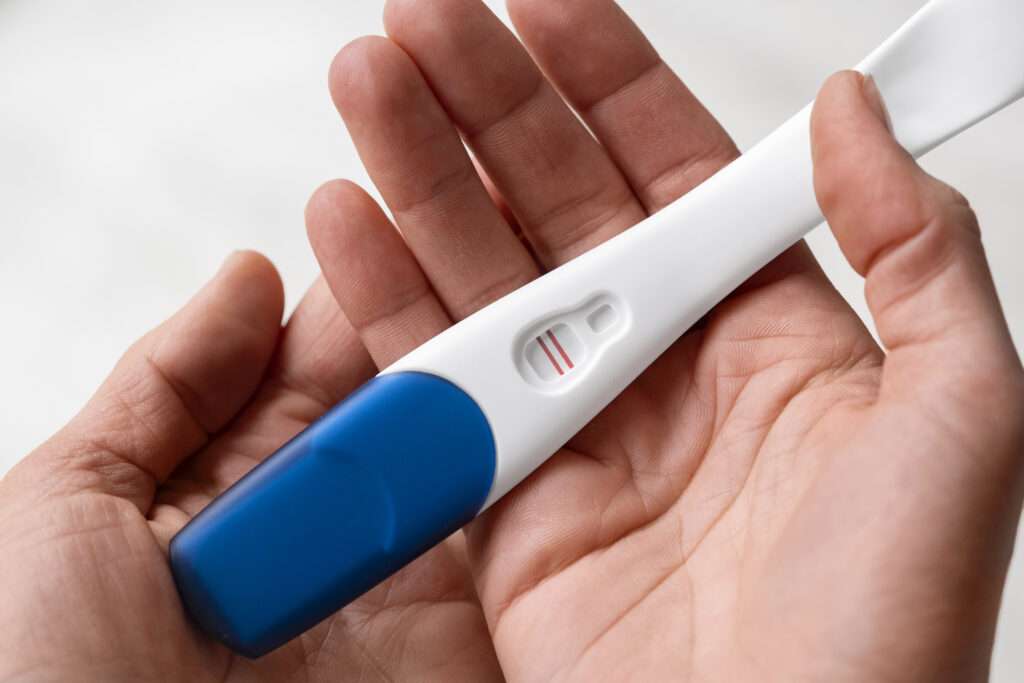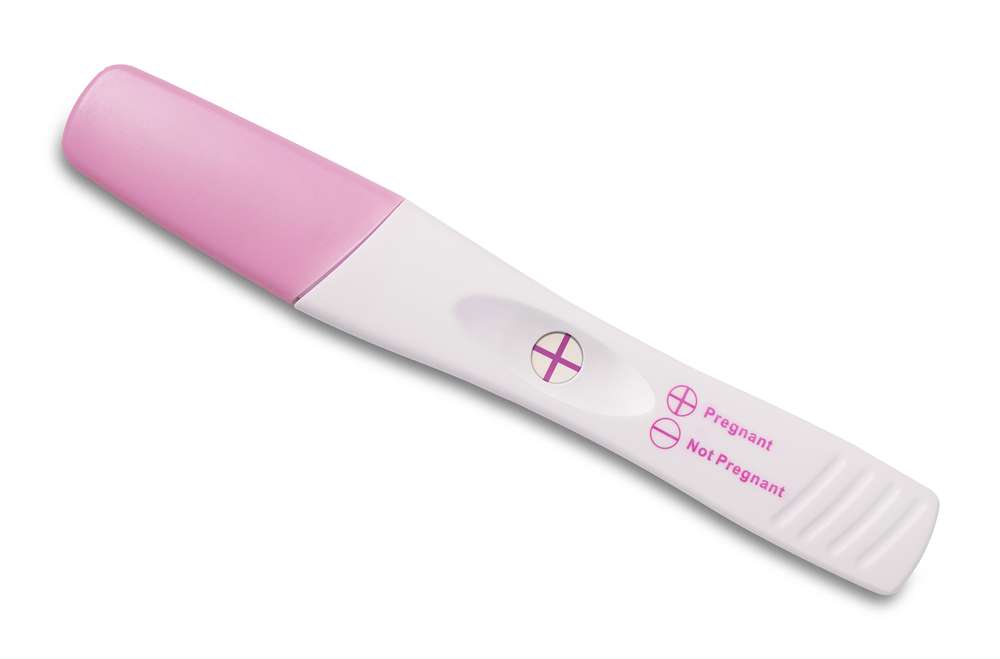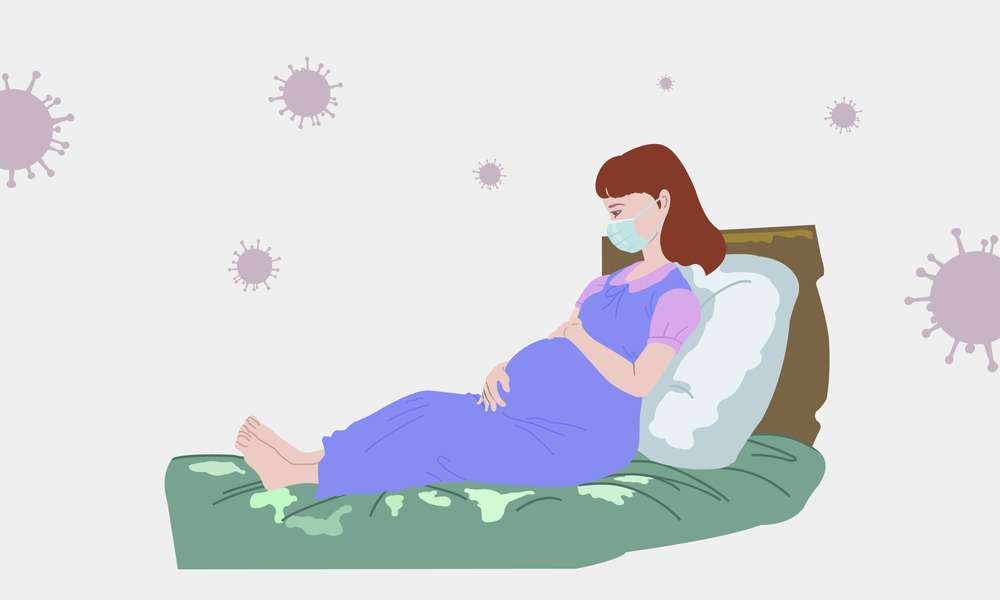Pregnancy test
A pregnancy test is a medical test that determines whether or not a woman is pregnant. It detects the presence of a hormone known as human chorionic gonadotropin (hCG) in urine or blood. The placenta produces hCG shortly after a fertilized egg attaches to the uterine lining. Its presence in the body is an excellent predictor of pregnancy.Pregnancy tests are classified into two types:
Urine Tests:
The most frequent sort of pregnancy test, available over-the-counter at most pharmacies. A urine test can be performed at home. To use it, take a urine sample in a cup and then either dip a test strip into the urine or apply pee to a test cassette with a dropper. Typically, results are available within a few minutes. Some tests show a line or a plus/minus symbol, although digital tests may simply say “pregnant” or “not pregnant.”
Blood Tests:
Pregnancy blood tests are commonly performed in the office of a healthcare professional. Blood tests are classified into two types:
The qualitative hCG blood test simply looks for the presence of hCG in the blood. It can determine whether or not you are pregnant. The quantitative hCG blood test (Beta hCG) determines the precise amount of hCG in the blood. It can not only confirm pregnancy but also estimate the age of the pregnancy and look for any potential problems.
When to take pregnancy test?
The timing of a pregnancy test is determined by various factors, including the type of test used and when you suspect you may have conceived. Following are some general guidelines:
A missed period is the most typical symptom that prompts a pregnancy test. If your monthly cycle is normal and you haven’t had your period in a while, it’s time to get a pregnancy test. This is usually approximately 1-2 weeks after a missing period for many women.
Pregnancy Tests for Early Detection:
Some pregnancy tests are designed to detect pregnancy earlier than others. These tests may claim to be able to identify pregnancy a few days before your menstruation. They are, however, less accurate at this early stage, thus there is a higher likelihood of having a false negative result. If you use an early detection test, wait until at least the day before your expected period to get more reliable results.
Comply with the test instructions:
Always follow the instructions that come with the pregnancy test. varying tests may have varying time requirements after conception before they may accurately identify pregnancy.
First-Morning urine:
Many women choose to use their first-morning pee for a pregnancy test because it is more concentrated and is more likely to have a greater quantity of hCG if they are pregnant. This can improve the test’s accuracy.
Ovulation Tracking:
If you’ve been actively trying to conceive and have been tracking your ovulation, you may have a better notion of when conception occurred. In this situation, based on your ovulation date, you can estimate the best time to take a test.
Repeat again:
If you get a negative result but still suspect you’re pregnant or your period doesn’t arrive, you can retest after a few days or a week. Because hCG levels normally double every 48 to 72 hours during early pregnancy, waiting a few days can improve test accuracy.
Consult a Medical Professional:
Consult a healthcare physician if you have concerns about pregnancy, irregular periods, or other health conditions that may influence the accuracy of the test. They can perform a blood test, which is more accurate than most home urine tests and can detect pregnancy earlier.
How soon will a pregnancy test read positive?
The timing of a positive pregnancy test might vary based on various factors, including the sensitivity of the test, when implantation happens, and your body’s levels of the pregnancy hormone hCG (human chorionic gonadotropin). Following are some general guidelines:
Period missed:
A pregnancy test is likely to be positive for most women around the time of their missing menstruation. This is normally within 1-2 weeks following conception, when hCG levels are high enough to be identified by a routine pregnancy test. Some “early detection” tests, on the other hand, claim to identify pregnancy a few days before your usual period.
Early Detection Tests:
Because some pregnancy tests are designed to detect lower quantities of hCG, they may provide positive results a few days before your expected period. However, in the very early stages of pregnancy, these tests may be less accurate, and there is a larger possibility of false negatives. If you use an early detection test, make sure to carefully follow the directions and consider retesting if your period is still delayed.
Urine in the morning:
Taking a pregnancy test with your first-morning urine (FMU) may boost your chances of getting a positive result because hCG levels are typically higher in FMU. This is especially useful if you’re testing prior to your missing period.
Implantation time:
Implantation occurs approximately 6-10 days after ovulation, when the fertilized egg attaches to the uterine lining. After implantation, it may take a few days for your body to produce enough hCG to be identified by a pregnancy test. As a result, the timing of implantation can influence when a test reads positive.
Errors in Testing:
The accuracy of a pregnancy test is also dependent on how it is used. Incorrectly using a test or failing to follow the directions can result in false results. Make sure you read and follow all of the directions that come with the test.
Blood Tests:
If you require pregnancy confirmation as soon as possible, a blood test (quantitative hCG blood test) performed by a healthcare provider can identify pregnancy as early as 7-12 days after conception. Blood tests are more sensitive than urine testing and are capable of detecting lower levels of hCG.
How early can you take a pregnancy test?
The earliest you can take a pregnancy test is determined by the sensitivity of the test and the time of implantation. Implantation is the process by which a fertilized egg attaches to the uterine lining and happens approximately 6-10 days after ovulation. After implantation, it may take a few days for your body to produce enough hCG (human chorionic gonadotropin) to be identified by a pregnancy test. Following are some general guidelines:
- Some pregnancy tests claim to detect pregnancy several days before your expected menstruation. These tests are usually more sensitive and can detect lower hCG levels. They could produce positive findings as soon as 7-10 days after fertilization.
- The majority of over-the-counter pregnancy tests are intended to be used on or after the day of your expected period. This corresponds to roughly 1-2 weeks after conception for most women. These tests are less sensitive and may not provide accurate results until you have missed your period.
- Testing using your first-morning urine (FMU) can boost your chances of getting a positive result, especially if you’re testing before your missed period. If you are pregnant, FMU is usually more concentrated and may include higher quantities of hCG.
First response pregnancy test:
The First Response pregnancy test is a brand of home pregnancy test that is well-known for its ability to identify pregnancy early. It’s a popular brand on the market for women who want to test for pregnancy as soon as possible, even before their period is due. Here are some of the First Response pregnancy test’s important features:
- According to First Response, it can detect pregnancy up to 6 days before your missing period. Because of its great sensitivity to the pregnancy hormone hCG, it detects pregnancy far earlier than many other home pregnancy tests.
- When used correctly, First Response, like other respected pregnancy tests, is highly accurate. To obtain reliable results, however, it is critical to carefully follow the directions provided with the test.
- While utilizing first-morning urine (FMU) with a First Response test is not always necessary, using FMU can increase the likelihood of receiving a positive result if you are testing before your missed period since it is more concentrated.
- To use a First Response pregnancy test, you typically obtain a urine sample and either dip the test strip into the urine or apply urine to a test cassette with a dropper. Typically, the findings are ready within a few minutes.
- Ensure that you read the test results within the time range indicated in the test instructions. Reading the findings outside of this window may result in inaccuracies.
- If you receive a positive result, you should visit with a healthcare provider for confirmation and prenatal care advice. If you get a negative result but still think you’re pregnant, retest in a few days or wait until you’ve missed your period for a more trustworthy result.
Faint line on pregnancy test:
A faint line on a pregnancy test can be perplexing, but it’s a typical occurrence with several possible explanations:
- If you took a pregnancy test very early in your pregnancy, your hCG levels may still be low. Pregnancy tests detect the presence of the hormone hCG, and hCG levels take some time to rise considerably after fertilization. A faint line could suggest that you are pregnant in the early stages.
- Some pregnancy tests are more sensitive than others, detecting lower quantities of hCG. A very sensitive test may detect hCG at lower doses, resulting in a faint line.
- The amount of hCG in your urine can change throughout the day. Urine is often at its most concentrated in the morning (first-morning urine), therefore if you perform a test later in the day, your urine may be more diluted, resulting in a fainter line.
- If you let a pregnancy test sitting for too long (usually longer than the recommended reading period of 5-10 minutes), you may observe a faint line that is not a true positive. This is known as an evaporation line, and it can be deceiving. It is critical to complete the test within the time frame stated in the instructions.
- Chemical Pregnancy: A faint line on a pregnancy test can indicate an early pregnancy loss in some situations, known as a chemical pregnancy. This occurs when a fertilized egg implants momentarily in the uterus but does not develop further. If you are concerned about a possible chemical pregnancy, you should seek further assessment from a healthcare specialist.
Note:
If you get a faint line on a pregnancy test, especially if you took it early, you should repeat in a few days or a week to see if the line darkens. A darker line usually implies a higher hCG concentration and a later stage of pregnancy. If you are still confused about the result or have concerns, consult with a healthcare provider for more information and perhaps a blood test to assess hCG levels, which can provide more precise pregnancy information.
How soon after unprotected can i test for pregnancy?
The timing of testing for pregnancy after unprotected intercourse is determined by various factors, including the sort of pregnancy test you intend to use and when your next menstrual cycle is expected. Following are some general guidelines:
- If you have a normal menstrual cycle and want to know if you’re pregnant, you should wait until you’ve missed your period. This is usually about 1-2 weeks beyond the estimated start date of your period. Testing too soon can result in false negatives because your body may not have created enough hCG (human chorionic gonadotropin) to identify a pregnancy.
- Some pregnancy tests are intended for early detection and may promise to identify pregnancy a few days before your due date. These tests are usually more sensitive to lower hCG levels. They are, however, less accurate when employed too early, and there is a greater chance of false negatives.
- If you’ve been tracking your ovulation and know when you ovulated, you can estimate the best time to test. Conception normally takes place within 24-48 hours of ovulation. If you test too soon after having intercourse, even if you’ve conceived, the test is unlikely to identify the pregnancy.
- Using your first-morning urine (FMU) can improve your chances of getting an accurate result, especially if you test before your missed period. If you are pregnant, FMU is usually more concentrated and may include higher quantities of hCG.
- If you test too soon and get a negative result but still suspect you’re pregnant, retest in a few days or a week. In early pregnancy, hCG levels double every 48-72 hours, thus waiting a few minutes can improve test accuracy.
- A blood test (quantitative hCG blood test) performed by a healthcare provider can identify pregnancy as early as 7-12 days after conception if you need proof of pregnancy very quickly. Blood tests are more sensitive than urine testing and are capable of detecting lower levels of hCG.
Clear blue pregnancy test:
Clearblue is another well-known brand of home pregnancy tests, and they provide a variety of pregnancy test options, some of which are unique. Here is a rundown of Clearblue pregnancy tests:
- Clearblue produces digital pregnancy tests that display the words “Pregnant” or “Not Pregnant” on a digital screen to deliver easy-to-read results. This removes the need to decipher lines or symbols.
- Similar to First Response, Clearblue Early Detection pregnancy tests claim to detect pregnancy up to 6 days before your missing period. These tests are specifically developed to detect the pregnancy hormone hCG.
- Another alternative is the Clearblue Rapid Detection pregnancy test, which provides results in only one minute. It is also intended for early detection, since it can test up to 5 days before your missing period.
- Clearblue provides typical visual line tests as well. These tests produce results in the form of lines or symbols, which you must interpret according to the instructions.
- Some Clearblue digital tests include a “smart countdown” function that displays a countdown on the screen until the result is available, indicating that the test is running.
- While it is not always necessary, utilizing your first-morning urine (FMU) can improve test accuracy, especially if you are testing before your missed period.
- The procedure for utilizing Clearblue pregnancy tests is identical to those of other home pregnancy tests. You collect a urine sample and either dip the test strip or apply pee to the test cassette with a dropper. Typically, results are available within a few minutes.
- Always read the test results within the time limit stated in the exam instructions. Reading the findings outside of this window may result in inaccuracies.
Note:
To get reliable results, as with any home pregnancy test, carefully follow the directions included with the Clearblue test. If you get a positive test, talk to your doctor about getting confirmation and advice on prenatal care. If you get a negative result but still think you’re pregnant, retest in a few days or wait until you’ve missed your period for a more trustworthy result.
Conclusion:
Remember that the accuracy of a pregnancy test is determined by a variety of circumstances, and it is critical to follow the directions supplied with the test for the most trustworthy results. If you have any questions or concerns about your pregnancy or the results of a pregnancy test, you should seek personalized advice and care from a healthcare provider.






